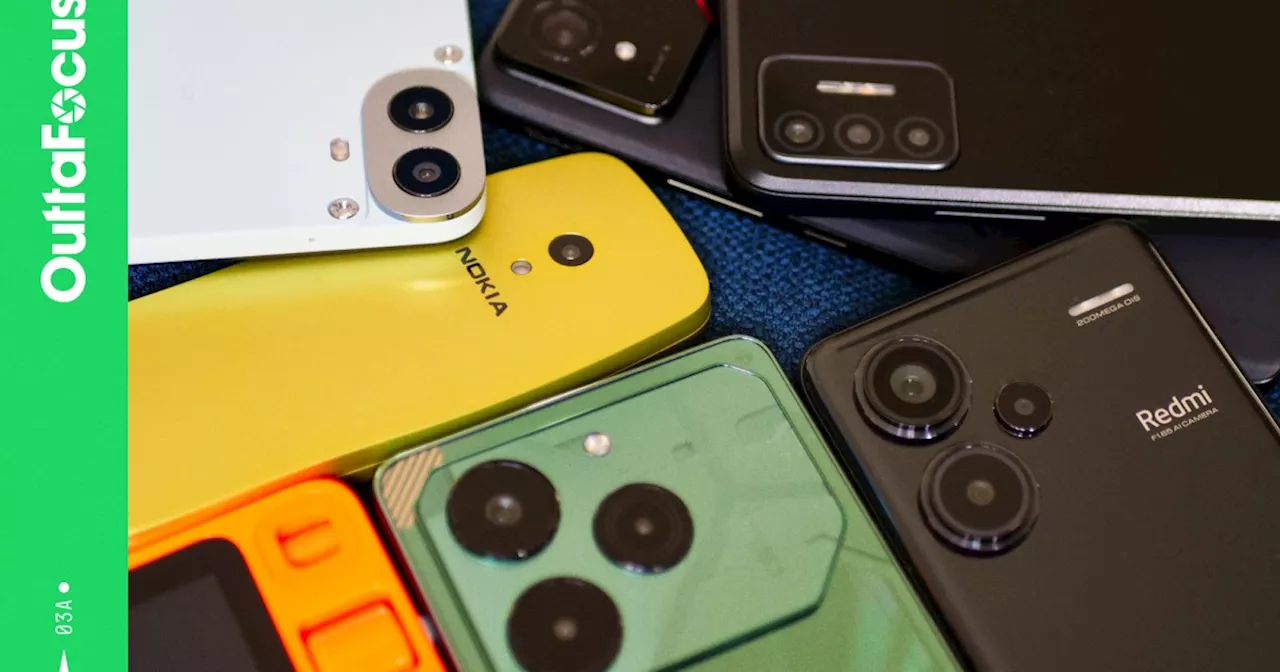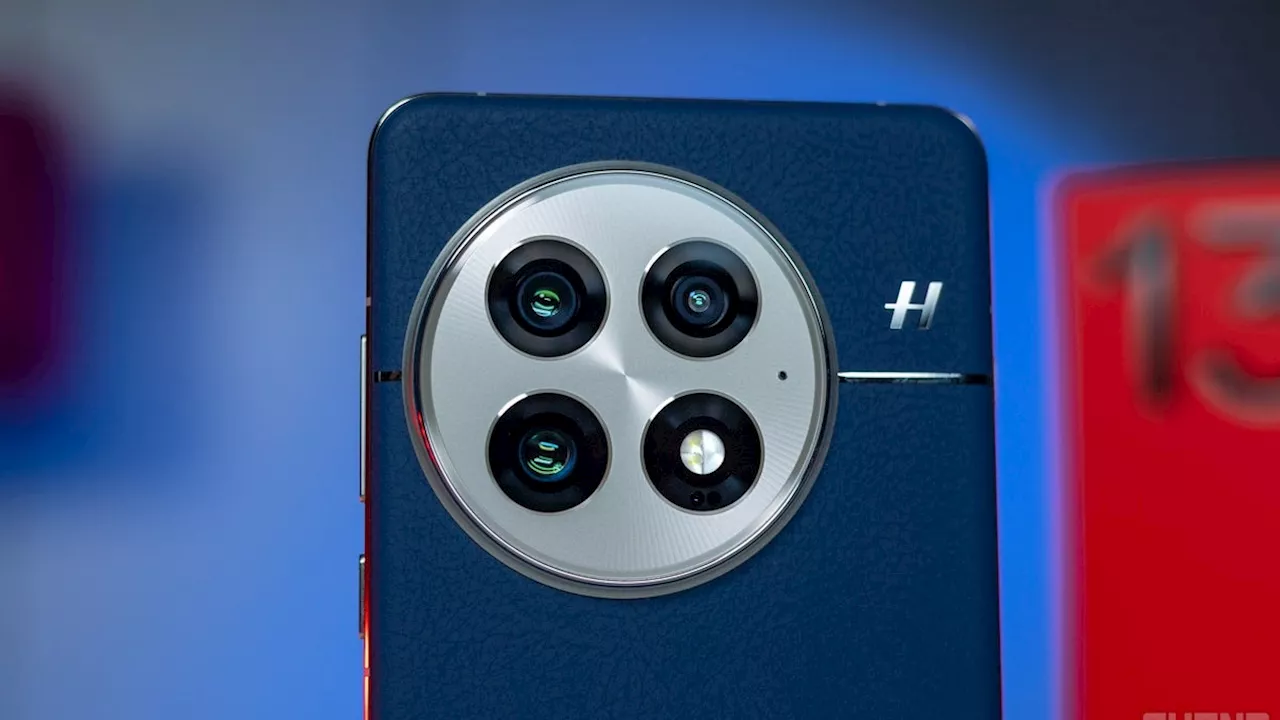This article explores the trend of smartphone manufacturers partnering with renowned camera brands, analyzing the impact on mobile photography. It examines successful collaborations like Huawei and Leica, as well as Xiaomi and Leica, highlighting their strengths and contributions to camera performance. The article also discusses less successful partnerships and the challenges these collaborations face.
Reserving a Galaxy S25 gives you a $50 Samsung Credit, extra savings of up to $1,250, and a chance to win $5,000! In today’s competitive smartphone market, brands are constantly searching for ways to differentiate themselves. One trend gaining traction is the collaboration between smartphone makers and renowned camera brands.
These partnerships aim to usher in a new era of mobile photography, but how much of that promise translates to reality? Are these advancements truly groundbreaking, or are we witnessing clever marketing tactics? The combination of camera expertise and smartphone innovation isn't new. It has been around for over a decade. One of the earliest and most notable examples is Nokia's partnership with Zeiss (formerly Carl Zeiss), which resulted in iconic devices like the Nokia N95. At the time, these phones were revolutionary, offering unmatched image quality in the mobile world. Fast forward to recent years, and we've seen even more ambitious collaborations emerge. Huawei joined forces with Leica in 2016, debuting the Huawei P9, a smartphone that set a new standard for mobile photography. The partnership introduced features like improved low-light photography and multi-lens setups, making the P-series a household name in camera performance. Other collaborations—such as OnePlus teaming up with Hasselblad, Xiaomi with Leica, and Vivo with Zeiss—have also strived to redefine the boundaries of smartphone cameras.Some collaborations have undoubtedly raised the bar. Huawei's partnership with Leica is a prime example. In our review of the Huawei P20 Pro, which was one of the first examples of a collaboration between phone and camera manufacturers, we highlighted how this phone's triple-camera setup was a game-changer. The monochrome sensor added unparalleled depth and detail to black-and-white photos, while the telephoto lens delivered excellent zoom capabilities. Of course, nowadays, the monochrome sensor is no longer part of modern phones due to advancements in camera technology and shifting priorities in design and functionality. Modern smartphones rely heavily on computational photography, which enables color sensors to simulate the effects of a monochrome sensor. Advanced algorithms can desaturate images, enhance contrast, and improve low-light performance without needing a dedicated monochrome sensor. And that's just one example. Most importantly, however, Leica's expertise in color science and image processing made photos vibrant yet balanced. The P20 Pro wasn't just an evolution in smartphone photography; it was a revolution that set new standards for years to come.Another, more recent standout collaboration is Xiaomi's work with Leica, which has led to exceptional devices like the Xiaomi 13 Pro. We praised its cutting-edge Summicron lenses, which delivered extraordinary clarity and minimized distortion. The Leica tuning brought vibrant, natural color reproduction, and the camera offered excellent dynamic range. This partnership clearly demonstrated how Leica's optical and software expertise could enhance a smartphone camera system, making it a worthy tool even for photography enthusiasts. It beat its rivals in three out of four of our photography categories, and a key factor that played into that win was the benefits from the collaboration with Leica. This partnership has been instrumental in refining the optical design and image processing of the Xiaomi phones.Not all collaborations have been equally successful. OnePlus's partnership with Hasselblad began with high expectations but had a rocky start. In our review of the OnePlus 10 Pro, we found that while the Hasselblad collaboration improved color accuracy and tonal balance, the hardware limitations of the camera system held it back. Features like better dynamic range and natural colors were noticeable, but they didn't elevate the phone to flagship-level performance compared to competitors like the Google Pixel 7 Pro. The Hasselblad collaboration still resulted in oversaturated colors and an overprocessed feel to each image. In some cases, even the Google Pixel 7 Pro offers photos that include more subdued tones. Hasselblad might have some influence in image tuning, but it seems OnePlus insists on sticking to the more in-your-face post-processing still. So, still, while the collaboration might have contributed to the camera's overall quality, it didn't completely close the gap with the top-tier flagships. Significantly reduced distortion and boosted clarity. Similarly, Huawei's P20 Pro benefited from Leica's expertise in reducing noise and enhancing sharpness, especially in challenging lighting conditions. One of the biggest advantages of these collaborations is improved color reproduction. Leica's approach added depth and realism to Xiaomi's photos, while Huawei's color tuning—developed with Leica—made colors pop without looking over-processed. These partnerships often bring unique tools to the table. For instance, the Huawei P20 Pro's monochrome sensor offered stunning black-and-white photography
MOBILE PHOTOGRAPHY CAMERA COLLABORATIONS SMARTPHONE TECHNOLOGY LEICA HUAWEI
United States Latest News, United States Headlines
Similar News:You can also read news stories similar to this one that we have collected from other news sources.
![]() Leica Unveils Camera Updates for 2024Leica refreshes its camera lineup with updates across all its major series, including the SL3, M-mount rangefinders, Q series, and D-Lux point-and-shoots. The company also introduces a new lens for the Q3.
Leica Unveils Camera Updates for 2024Leica refreshes its camera lineup with updates across all its major series, including the SL3, M-mount rangefinders, Q series, and D-Lux point-and-shoots. The company also introduces a new lens for the Q3.
Read more »
 This is the worst smartphone camera I used in 2024, and it’s not even closeChoosing the best camera phone of 2024 was easy, but what about the worst camera phone of the year? There are some strong contenders, but only one winner.
This is the worst smartphone camera I used in 2024, and it’s not even closeChoosing the best camera phone of 2024 was easy, but what about the worst camera phone of the year? There are some strong contenders, but only one winner.
Read more »
 Panasonic Leica DG Elmarit 200mm f/2.8 POWER O.I.S Lens ReviewA comprehensive review of the Panasonic Leica DG Elmarit 200mm f/2.8 POWER O.I.S lens, highlighting its features, performance, and value for money.
Panasonic Leica DG Elmarit 200mm f/2.8 POWER O.I.S Lens ReviewA comprehensive review of the Panasonic Leica DG Elmarit 200mm f/2.8 POWER O.I.S lens, highlighting its features, performance, and value for money.
Read more »
![]() Artra Lab Releases Leica Summilux Inspired 35mm f/1.4 Lens for $530Artra Lab unveils a new 35mm f/1.4 lens heavily inspired by the legendary Leica Summilux Steel Rim lens. The Similar 35mm f/1.4 boasts a CNC-machined aluminum chassis, superior durability, and a minimalist aesthetic. Weighing just 200 grams and measuring 33 millimeters in length, it offers a premium feel at a fraction of the Leica's price. While optically similar to the Leica with seven elements in five groups and 10 aperture blades, the Artra Lab lens allows for slightly closer focusing at 0.8 meters.
Artra Lab Releases Leica Summilux Inspired 35mm f/1.4 Lens for $530Artra Lab unveils a new 35mm f/1.4 lens heavily inspired by the legendary Leica Summilux Steel Rim lens. The Similar 35mm f/1.4 boasts a CNC-machined aluminum chassis, superior durability, and a minimalist aesthetic. Weighing just 200 grams and measuring 33 millimeters in length, it offers a premium feel at a fraction of the Leica's price. While optically similar to the Leica with seven elements in five groups and 10 aperture blades, the Artra Lab lens allows for slightly closer focusing at 0.8 meters.
Read more »
![]() Leica M2Pi: Bridging Analog and Digital in a Hybrid Photography RevolutionThe Leica M2Pi, a fusion of classic Leica M2 design and modern Raspberry Pi technology, offers photographers a unique blend of analog charm and digital versatility. This updated hybrid camera boasts a larger sensor, internal battery, and flash compatibility, making it a practical tool for real-world photography.
Leica M2Pi: Bridging Analog and Digital in a Hybrid Photography RevolutionThe Leica M2Pi, a fusion of classic Leica M2 design and modern Raspberry Pi technology, offers photographers a unique blend of analog charm and digital versatility. This updated hybrid camera boasts a larger sensor, internal battery, and flash compatibility, making it a practical tool for real-world photography.
Read more »
 Panasonic Leica DG Elmarit 200mm f/2.8 POWER O.I.S. Review: A Compact Telephoto PowerhouseThis review explores the Panasonic Leica DG Elmarit 200mm f/2.8 POWER O.I.S., a compact telephoto prime lens offering a 400mm equivalent focal length. It highlights the lens's excellent image quality, fast autofocus, lightweight design, and bundled 1.4x teleconverter, making it a versatile option for photographers seeking reach in a manageable package.
Panasonic Leica DG Elmarit 200mm f/2.8 POWER O.I.S. Review: A Compact Telephoto PowerhouseThis review explores the Panasonic Leica DG Elmarit 200mm f/2.8 POWER O.I.S., a compact telephoto prime lens offering a 400mm equivalent focal length. It highlights the lens's excellent image quality, fast autofocus, lightweight design, and bundled 1.4x teleconverter, making it a versatile option for photographers seeking reach in a manageable package.
Read more »
